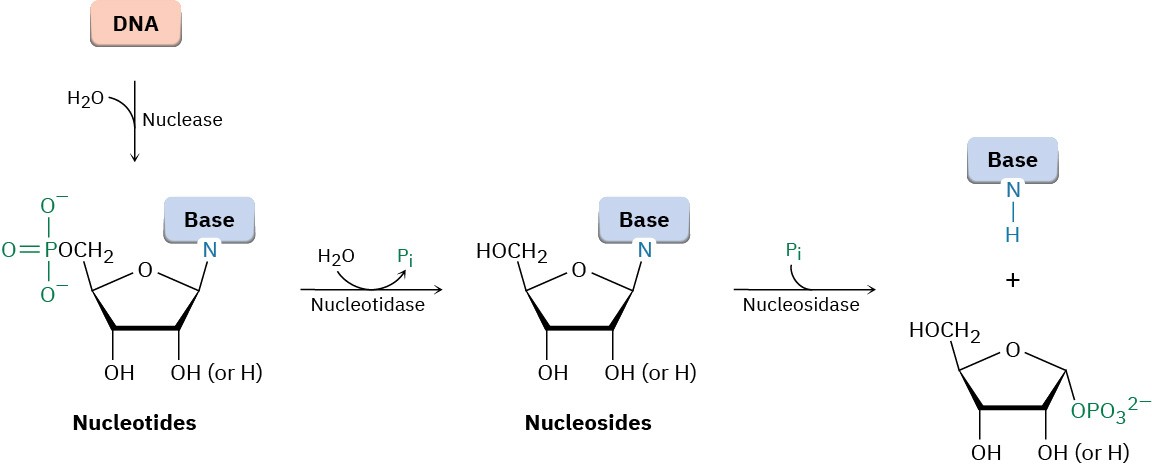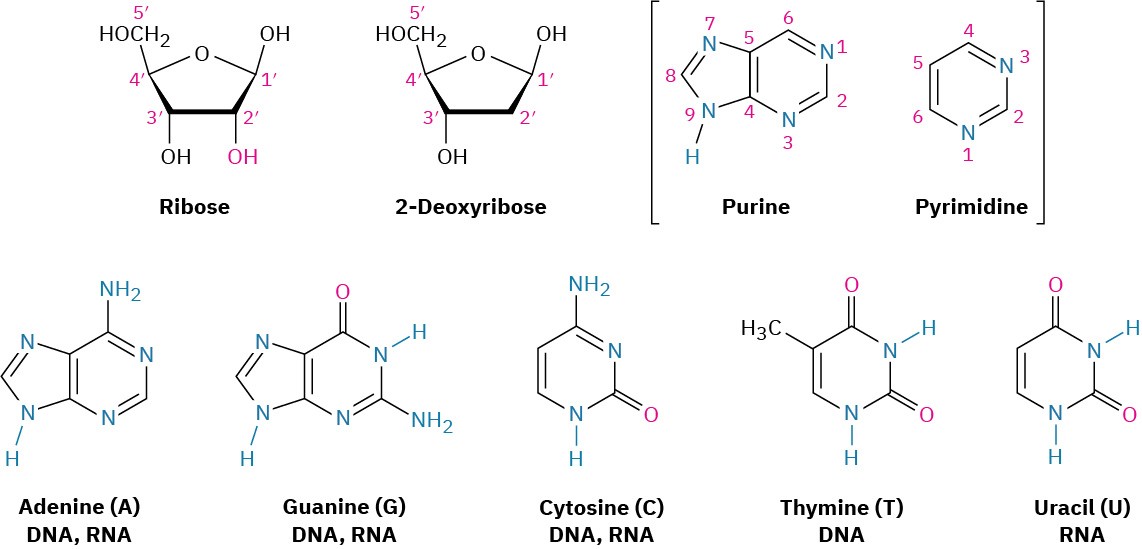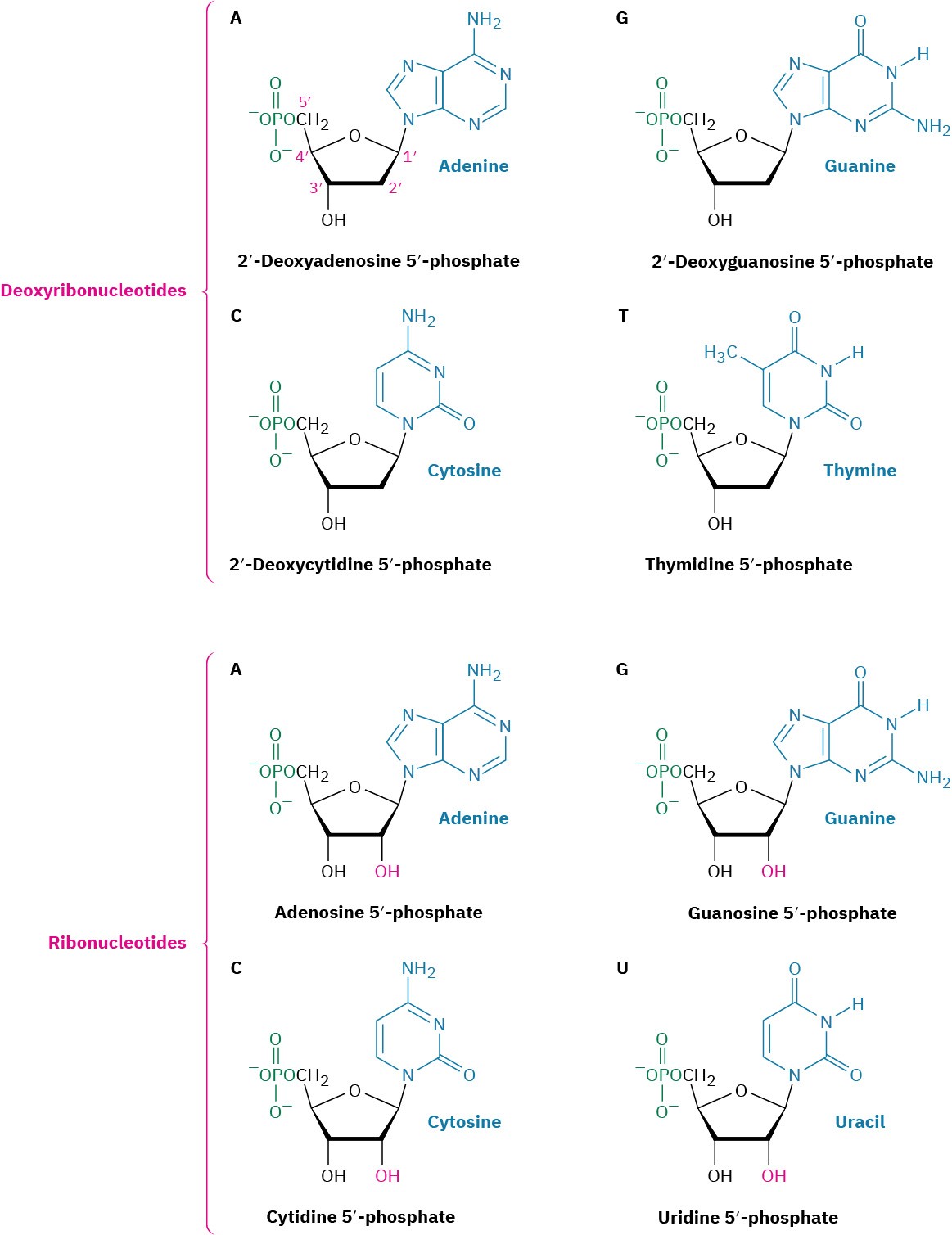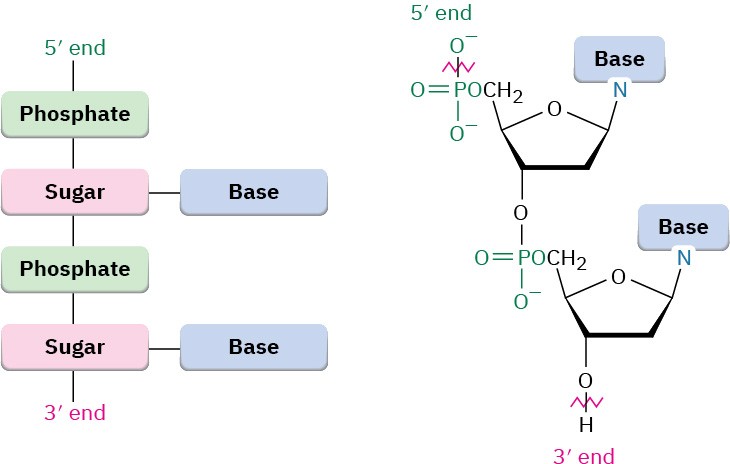28.1 Nucleotides and Nucleic Acids
Just as proteins are biopolymers made of amino acids, the nucleic acids are biopolymers made of nucleotides, joined together to form a long chain. Each nucleotide is composed of a nucleoside bonded to a phosphate group, and each nucleoside is composed of an aldopentose sugar linked through its anomeric carbon to the nitrogen atom of a heterocyclic purine or pyrimidine base.

The sugar component in RNA is ribose, and the sugar in DNA is 2′-deoxyribose. (In naming and numbering nucleotides, numbers with a prime superscript refer to positions on the sugar and numbers without a prime superscript refer to positions on the heterocyclic base. Thus, the prefix 2′-deoxy indicates that oxygen is missing from C2′ of ribose.) DNA contains four different amine bases: two substituted purines (A, adenine, and G, guanine) and two substituted pyrimidines (C, cytosine, and T, thymine). Adenine, guanine, and cytosine also occur in RNA, but thymine is replaced in RNA by a closely related pyrimidine base called U, uracil.

The structures of the four deoxyribonucleotides and the four ribonucleotides are shown in Figure 28.2. Although similar chemically, DNA and RNA differ dramatically in size.
Molecules of DNA are enormous, containing as many as 245 million nucleotides and having molecular weights as high as 75 billion. Molecules of RNA, by contrast, are much smaller, containing as few as 21 nucleotides and having molecular weights as low as 7000.

Figure 28.2Structures of the four deoxyribonucleotides and the four ribonucleotides.
Nucleotides are linked together in DNA and RNA by phosphodiester bonds [RO–(PO2–)–OR′] between phosphate, the 5′-hydroxyl group on one nucleoside, and the 3′-hydroxyl group on another nucleoside. One end of the nucleic acid polymer has a free hydroxyl at C3′ (the 3′ end), and the other end has a phosphate at C5′ (the 5′ end). The sequence of nucleotides in a chain is described by starting at the 5′ end and identifying the bases in order of occurrence, using the abbreviations G, C, A, T (or U in RNA). Thus, a typical DNA sequence might be written as TAGGCT.

Problem 28-1
Draw the full structure of the DNA dinucleotide AG. Problem 28-2
Draw the full structure of the RNA dinucleotide UA.

